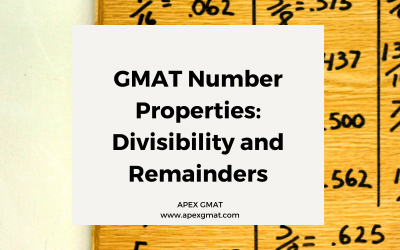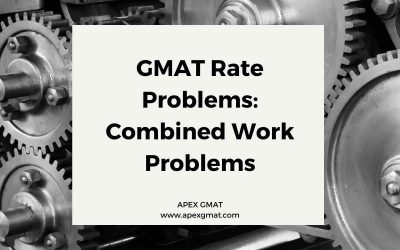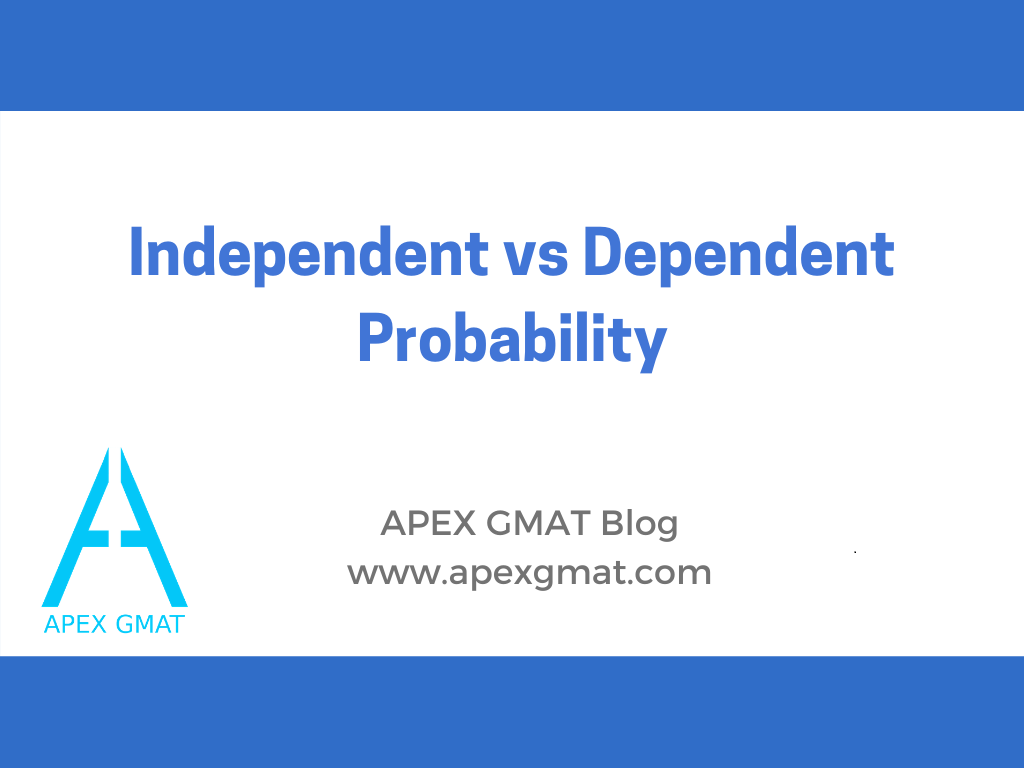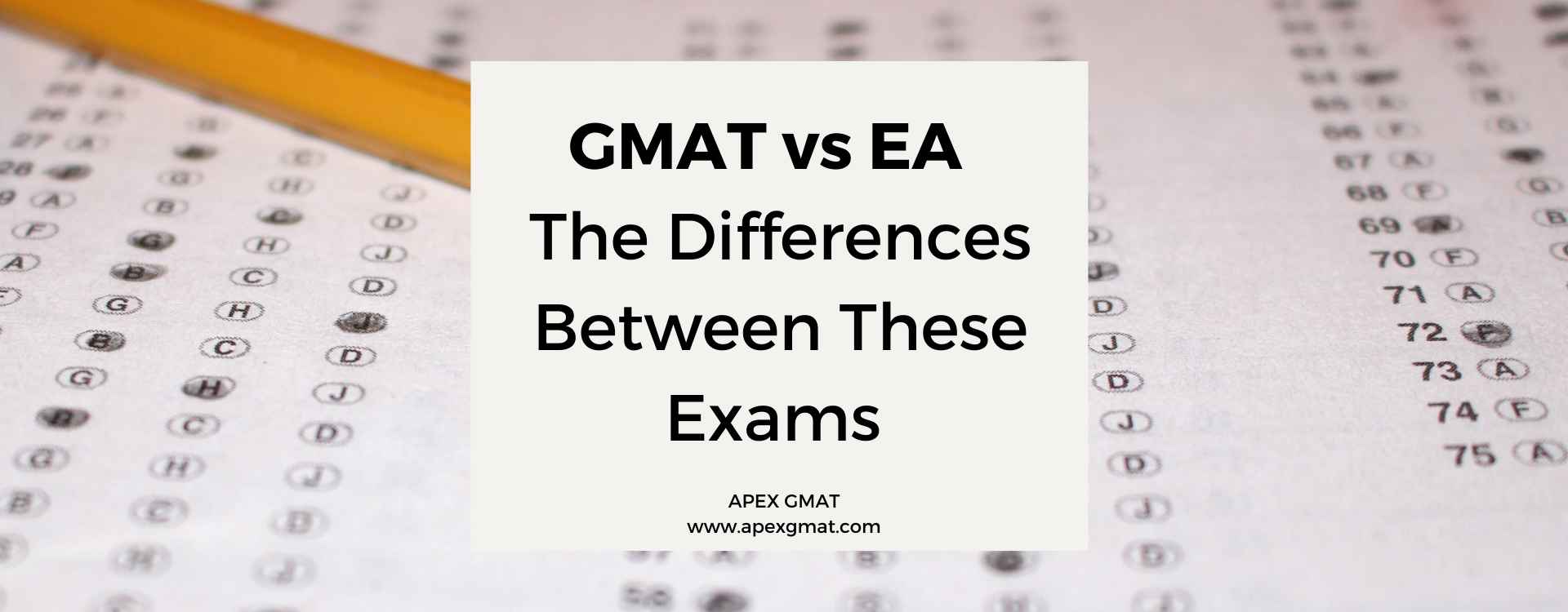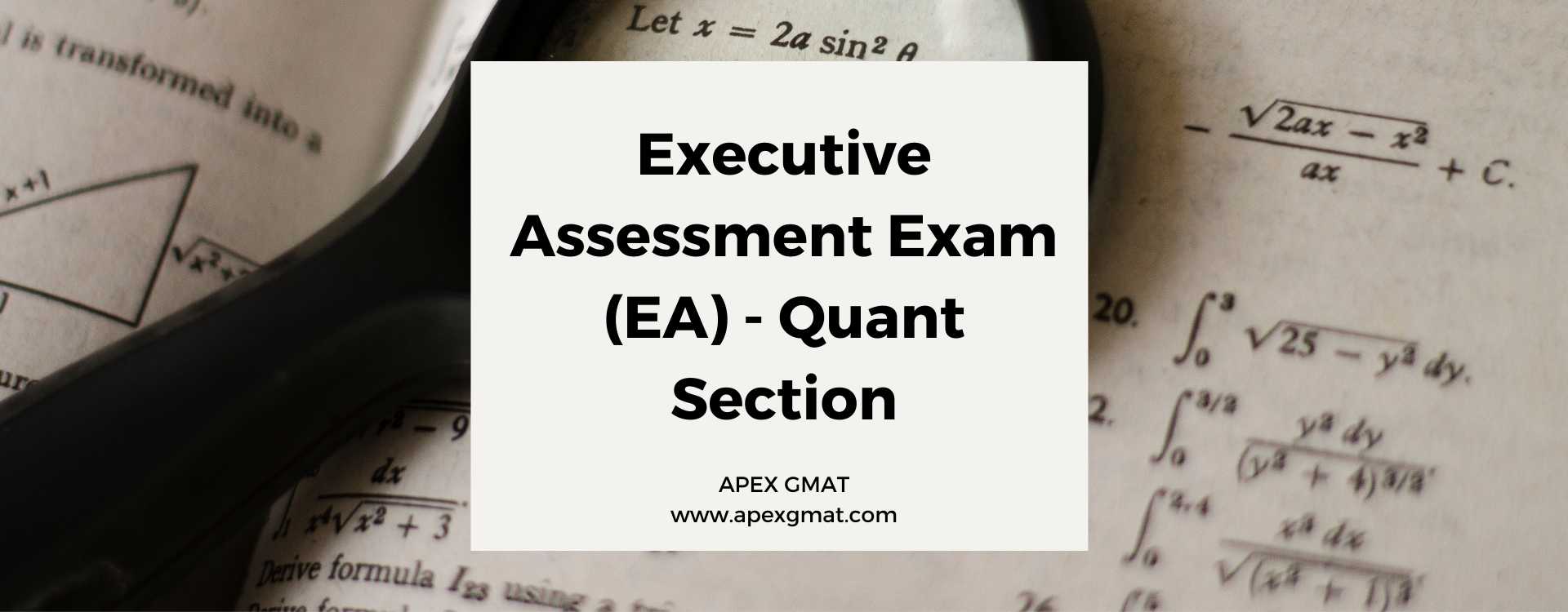Blog
Top Posts
GMAT Number Properties: Divisibility and Remainders
Welcome back to our series on number properties. In this article, we deal with the fallout of failed divisibility: remainders. Remainders exist whenever an integer is divided by another integer that is not one of its factors. When integer n is divided by integer x,...
Consecutive Integers (plus more on Odds and Evens)
In our last post, we left you with a GMAT Official Guide Data Sufficiency problem to tackle regarding Odd/Even Number Theory. Here it is, if you didn’t get a chance to do it before: If x and y are integers, is xy even? (1) x = y + 1. (2) x/y is an even integer....
GMAT Rate Problems: Combined Work Problems
Welcome back to our series on rate problems. In the first article, we introduced the relationship between the variables of rate, work, and time - or speed, distance, and time. This article and the next will teach you how to approach combined work problems which...
All Our Posts
7 Tips To Improve Your GMAT Quant Score
If you’ve experienced the GMAT, you may have noticed that your score is higher on some sections than others. Some otherwise strong business school candidates struggle with their score on the quantitative section. The problem might derive from preparation style, in...
How The EA Can Lead To A Fulfilling Career
The EA (Executive Assessment) is an exam which tests skills related to business leadership and management. In a few words, it is a more focused version of the GMAT. The EA and the GMAT are designed by the same company - the GMAC. The EA is designed mainly for EMBA...
The 5-12-13 and 7-24-25 Right Triangles
The 5-12-13 and 7-24-25 Right Triangles Although the 3-4-5 right triangle is by far the most common of the so-called “Pythagorean triples” tested on the GMAT, there are a few others worth knowing. First, a little review: You’ll recall that the Pythagorean Theorem (a²...
Independent vs. Dependent Probability
Independent vs. Dependent Probability As promised last time, we’ll return to some strict GMAT probability today. Specifically, we’ll discuss the difference between independent and dependent probability. This simply refers to whether or not the events involved are...
Combinations with Restrictions
In our previous post, we discussed how GMAT combinatorics problems can involve subtracting out restrictions. However, we discussed only PERMUTATIONS and not COMBINATIONS. Today, we’ll take a look at how the same technique can be applied to COMBINATION problems. This...
GMAT vs Executive Assessment
GMAT vs Executive Assessment The Executive Assessment (EA) and the GMAT are both admissions exams designed for MBA or EMBA programs. Both are accepted among most MBA programs, with the GMAT being the gold standard of MBA admissions since its release in 1953. In 2016...
What Happens When Permutations Have Repeat Elements?
As promised in the last post, today we’ll discuss what happens when we have a PERMUTATIONS situation with repeat elements. What does this mean exactly? Well, let’s return to the basic example in our intro post on GMAT combinatorics: If we have five distinct paintings,...
A Continuation of Permutation Math
Review of Example From Last Post Last time, when we started our discussion of GMAT Combinatorics, we gave a brief example of GMAT permutations in which we had five paintings and asked how many arrangements could be made on a wall with those paintings. As it turns out,...
Triangles With Other Shapes
As discussed before, now that we’ve talked about the basic triangles, we can start looking at how the GMAT can make problems difficult by embedding triangles in other figures, or vice versa. Here are just a few examples, which include triangles within and outside of...
Triangle Inequality Rule
One of the less-common but still need-to-know rules tested on the GMAT is the “triangle inequality” rule, which allows you to draw conclusions about the length of the third side of a triangle given information about the lengths of the other two sides. Often times,...
Similar Triangles – GMAT Geometry
Triangles, and Geometry in general, are something you need to master as much as you can before your GMAT exam. It can seem complicated in the beginning, but once you start working with different geometric objects and its shapes, thing will definitely get easier. The...
GRE Reading Comprehension
Reading comprehension accounts for half of the questions on the GRE verbal reasoning sections. To do well on these questions, you need a framework for understanding the purpose and structure of the passages. Some passages are very short – really more accurately termed...
Isosceles Triangles and Data Sufficiency
Although we’ve already discussed isosceles triangles a bit during our discussion of 45-45-90 (i.e. isosceles right) triangles, it’s worth discussing some other contexts in which you may see isosceles triangles on the GMAT, specifically on Data Sufficiency problems. ...
Which MBA Programs Are Right For Me?
Selecting the right MBA program is a crucial step in advancing your career, whether you're aiming to advance in your existing path, transition into a new industry or role, deepen your expertise, or expand your professional network. Going to a program with a...
GRE Exam Guide: Structure, Scoring & Tips
If you’re at the beginning of your GRE prep journey, understanding the exam’s structure and equipping yourself with the best strategies for each section is essential. This article overviews the GRE's format, scoring system, and those strategies that are most effective...
The Area of an Equilateral Triangle
As promised, we will now connect the 30-60-90 triangle to the equilateral triangle, specifically its area. There is a formula for the area of an equilateral triangle as it relates to the length of its side s, and it is as follows: But more likely than not for the...
45-45-90 Right Triangle – GMAT Geometry Guide
45-45-90 Right Triangle Another of the commonly tested triangles on the GMAT is the 45-45-90, also known as the isosceles right triangle. Know that term, as it could appear by name in a question. As shown in the above diagram, the side lengths of this triangle always...
Anatomy of GRE Quantitative Reasoning Section
Unless you’re a math major, chances are that when you start preparing for the GRE test, it’s been a while since you took a math class. Your algebra skills, once sharp and shiny, are rusty. Formulas you once knew are getting mixed up and mixed around. Your times tables...
GMAT Score Chart 2025: Understanding Scores and Percentiles
The GMAT is a crucial part of the business school application process. Achieving an excellent GMAT score and ranking in the top percentiles is the first stepping stone in your journey to a prestigious business career. As the GMAT updates its format to the GMAT Focus...
Executive Assessment Quantitative: Full Guide
The Executive Assessment (EA) Quantitative Section is a crucial part of the EA exam; it’s a referendum on your fitness to handle an EMBA, while also making up one-third of your overall score. It assesses your problem-solving skills, logical reasoning, and ability to...
Comprehensive GMAT Preparation
Step 1 – Complimentary Consultation
Step 2 – Assessment & Written Report
Step 3 – Work with a top scoring Apex trained instructor on your personalized prep plan.
Step 4 – Success
View our client success stories and find out how we position our clients to achieve and why we are the best choice for your success.
Book a Meeting Today!
Schedule a complimentary consultation call with one of our Instructors for Success with Apex . Act now as others have already done.

